Il museo racconta. Dall’arte ceramica alla pittura vascolare nelle collezioni dei musei archeologici della Magna Grecia: costruire, decostruire, ricostruire
Abstract
Nell’ambito di un programma di ricerca industriale, si è sviluppato il progetto VISA, Visualizing Innovative and Social Artworks, per mezzo del quale si intende realizzare un nuovo modello di spazio museale, il Museo 3.0, raccogliendo la sfida lanciata dal MiBACT di aumentare le performance dei musei italiani mediante l’uso del digitale, potenziando in modo consapevole l’aspetto tecnologico della comunicazione, fruizione e valorizzazione delle opere d’arte.
La ricerca si focalizza sullo studio e sull’analisi di un vasto repertorio di vasi in terracotta, a figure nere e a figure rosse, provenienti dall’area magno-greca. Qui si presenta, per la prima volta, un lavoro che parte dal rilievo fotogrammetrico di antichissime ceramiche a doppia e tripla curvatura. Una volta analizzati i modelli secondo uno studio geometrico della forma, si è passati ad un processo digitale di "srotolamento" della superficie, per concentrarsi così sulle figure rappresentate.
Si è potuto così studiare la scena, per passare poi ad una ricostruzione 3D della rappresentazione vascolare, in modo da rendere l’oggetto archeologico un soggetto vivo, parlante e semantico, orientato a più livelli di fruizione.
Il Museo 3.0, oggi vuol costituirsi come un grande centro di interpretazione, in grado di attivare le comunità e di confrontarsi con tematiche molto diverse, quali: la sostenibilità (sociale, culturale ed economica), la marginalità, l’inter-cultura, il glocale, ecc. È un museo "liquido", accessibile, visitabile, adattabile, secondo una visione dinamica, immersiva e multi-sensoriale, al fine di favorire una fruizione della cultura più attenta, inclusiva, sostenibile e partecipata.
The Museum tells. Ceramic Art and Vascular Painting in the Collections of the Archeological Museum of Magna Grecia: Building, Decostruting, Rebuilding
In the field of industrial research programmes, we worked on the VISA project; Visualising Innovative and Social Artworks, through which we tried to create a new model of 3.0 museum. We embrace the challenge thrown by the MiBACT to increase the performance of Italian museums in their use of digital ICT, reinforcing communication, the fruition and the dissemination of artworks and of Cultural Heritage. The research is focalised on the study and the analysis of a wide repertoire of vases, red-figure and black-figure potteries, discovered in the Magna-Greco area. Here, we present, for the first time ever, a research that starts from the photogrammetric survey of very ancient potteries, characterised by double or triple curvature. Once we analysed the geometry of the models, we unwrapped the surfaces of the vases, normalising the figures and calculating their deformations. After that, we modelled the 3D scene, through a digital segmentation of the space. Thanks to this methodology, a new semantic meaning enriches the ‘silent’ artworks, making them alive and more communicative.
Nowadays, the 3.0 Museum, has become a new centre of interpretation, able to activate the communities and to deal with many themes: sustainability (social, cultural and economical s.), marginality, inter-culture, the g-local, etc. It is a ‘liquid’ museum: a friendly and flexible museum, according to a dynamic, immersive and multiple-sensorial view, with the aim of promoting a more careful, inclusive and sustainable dissemination of culture.
Parole chiave
Full Text
PDFDOI: https://doi.org/10.14633/AHR152
Refback
- Non ci sono refbacks, per ora.
Copyright (c) 2019 Francesca Fatta, Andrea Marraffa

This work is licensed under a Creative Commons Attribution-NonCommercial 4.0 International License.
........................................................................................................................................................................................................................................................................................................................................................
ArcHistoR è una rivista open access e peer reviewed (double blind), di Storia dell’architettura e Restauro, pubblicata dall’Università Mediterranea di Reggio Calabria con cadenza semestrale.
ISSN 2384-8898
![]()

Comitato scientifico internazionale
Maria Dolores Antigüedad del Castillo-Olivares, Monica Butzek, Jean-François Cabestan, Alicia Cámara Muñoz, David Friedman, Alexandre Gady, Jörg Garms, Miles Glenndinning, Mark Wilson Jones, Loughlin Kealy, Paulo Lourenço, David Marshall, Werner Oechslin, José Luis Sancho, Dmitrij O. Švidkovskij
Comitato direttivo
Tommaso Manfredi (direttore responsabile), Giuseppina Scamardì (direttrice editoriale), Antonello Alici, Salvatore Di Liello, Fabrizio Di Marco, Paolo Faccio, Mariacristina Giambruno, Bruno Mussari, Annunziata Maria Oteri, Francesca Passalacqua, Edoardo Piccoli, Renata Prescia, Nino Sulfaro, Fabio Todesco, Guglielmo Villa
 .
. 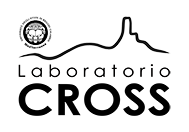


2.jpg)
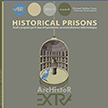
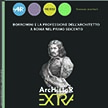
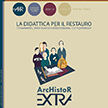
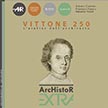
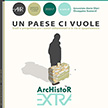
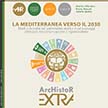
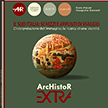
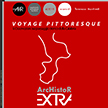
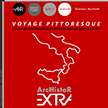
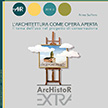
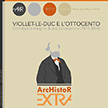
_2.jpg) .
. 
 .
. 

